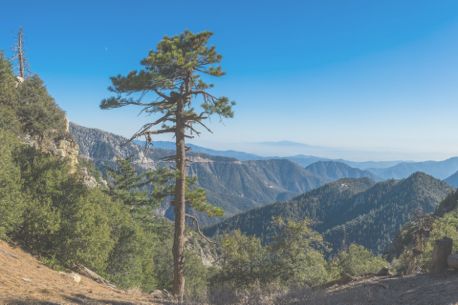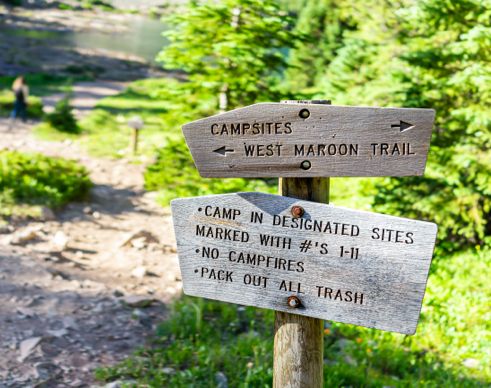The Chippewa National Forest, established initially as a reserve in 1902 and re-established as a national forest in 1908, offers a rich and diverse landscape for nature enthusiasts. Covering vast expanses of land in northern Minnesota, nearly half of the forest is made up of various watersheds, creating a dynamic ecosystem. The forest is also home to a remarkable area of old-growth trees, some over 350 years old, providing a glimpse into the past and a sanctuary for wildlife.
The Chippewa National Forest offers a variety of campgrounds for outdoor enthusiasts to enjoy. Noma Lake Campground is nestled among paper birch and white pine trees, providing a serene atmosphere and excellent fishing opportunities for bass, northern pike, and panfish. South Pike Bay Campground is known for its clear, secluded waters, great fishing, and rich cultural history, featuring campsites with a picnic and swimming area. Clubhouse Campground offers a sandy swimming beach, an accessible fishing pier, and a day-use area, with Clubhouse Lake offering perfect fishing conditions for northern pike, bass, and panfish. RVs can be easily booked using RV Share rental options.
Camping in Chippewa National Forest
Whether you prefer camping inside the forest or at nearby private campgrounds, numerous options suit every budget for camping near Chippewa National Forest.
Campgrounds in Chippewa National Forest
Private Campgrounds Near Chippewa National Forest
For additional camping options near Chippewa National Forest, explore nearby campgrounds available on RVshare, offering a range of choices to suit your needs. You can also find convenient dump stations nearby to ensure a hassle-free RV experience.
Campgrounds by Lakes/Rivers for Fishing and Water Activities
Budget-friendly Campgrounds

-
Maplewood State Park Campground
Maplewood State Park has a variety of lodging choices that include primitive, group, and equestrian sites, totaling 71 sites total with 32 electric RV sites. The state park contains eight small lakes and several ponds that lie below hills in the interiors of deep valleys. The habitats are diverse and contain both western prairies and eastern forests, and visitors can see much of these areas from the extensive multi-use trail system all year-round. Besides all the usual summer fun, you can also enjoy snowshoeing, snowmobiling, and cross-country skiing in the winter. Maplewood State Park is particularly popular in the fall because of its large number of sugar maple, basswood, and oak trees, all of which display splendid colors when they change.
Number of sites: 32 RV sites
Rates: Call for rates
Type of hookup: Electric
Amps: 50
Wi-Fi: No
Pool or Hot tub: No
Pet-friendly: Yes
Showers: Coin-operated
Laundry: No
Other amenities: Small shop in the park office, boat rentals, playground, dump station, water, two boat launches, 10 miles from town
-
Chippewa National Forest Chippewa Campground
The Chippewa Campground is located on Cass Lake and is part of the Norway Beach Recreation Area inside Chippewa National Forest. Cass Lake covers almost 16,000 surface acres and has 27 miles of tree-lined shores and sandy beaches. The entirety is filled with mature stands of red and white pines.
Chippewa National Forest Hiking Trails
Explore the diverse hiking trails in Chippewa National Forest, ranging from easy walks to challenging treks.
Easy Hikes for Beginners
Slightly Challenging Trails
Lakeside Trails

-
Lost 40 Trail
The Lost 40 Trail is a loop trail near Wirt. The trail travels through a forest of old-growth red and white pines and is a good choice for any skill level. There are numerous informative plaques that name the nearby plants and also explain the history of the site. Dogs are allowed if they are leashed.
Length: 1.9 miles
Intensity: Moderate
-
Lake Erin to North Stocking Lake
Lake Erin to North Stocking Lake is an in-and-out trail located near Hackensack. The trail is a mix of forested and wetland areas and has a few moderately inclined hills. The trail is not crowded, and hikers have a good chance to see occasional sightings of wildlife. Dogs are allowed on a leash.
Length: 9.9 miles
Intensity: Moderate
-
Heartland Trail: Hidden Road to Park Rapids
Heartland Trail: Hidden Road to Park Rapids is an in-and-out trail near Akeley and features a lake. The trail is most often used for hiking, running, and mountain biking and is moderate for most skill levels. This multi-use trail is often used by snowmobilers in the winter months, and it is a Rails to Trails trail. Dogs are allowed if they are leashed.
Length: 22 miles
Intensity: Moderate
-
Lake Windigo Loop
Lake Windigo Loop is a loop trail that is located near Pike Bay. It has wildflowers in the spring and summer months and is a good trail for bird-watching. The trail is a long one but can be hiked in sections. Dogs are allowed on a leash.
Length: 22 miles
Intensity: Moderate
-
Lake Erin Loop
Lake Erin Loop is a short loop trail that lies along Lake Erin. It is an easy trail that is good for young children, and it has several small bridges that ford the streams. You can view beaver dams and evidence of beavers cutting the trees. Dogs are allowed when they are leashed.
Length: 0.7 miles
Intensity: Easy
How to get to Chippewa National Forest
Address: 200 Ash Avenue NW, Cass Lake, MN 56633
Fee: Entry fee (ages 62+) $10.0
Fee: Entry fee (annual pass) $80.0
By Car
From Minnesota: Head west on 20th St SW and take MN-64 N for about 5 miles. Continue on MN-64 N, then turn onto MN-34 E/Lake Country Scenic Byway for 3.4 miles to arrive at the forest.
From Longville:Head east on 1st St N and turn left onto MN-84 N for 4.6 miles. Then, take MN-200 E for 14.7 miles and continue slightly right on MN-200 E for another 8.3 miles to reach the forest.
By Air
Bemidji Regional Airport (BJI):Head west on Moberg Dr NW for 0.3 miles. Follow US-71 N to Dudrey St in Tenstrike for 17.3 miles, then drive on Main St for 0.5 miles to reach the forest.
Brainerd Lakes Regional Airport (BRD): Head southwest on Airport Rd for 0.2 miles, then turn right to stay on Airport Rd for another 0.2 miles. Turn left onto MN-210 E and continue for 11.3 miles, then follow MN-6 N for 41.7 miles. Turn right onto MN-200 E/MN-6 N for 0.8 miles and take a slight right to stay on MN-200 E for 8.3 miles to reach the forest.
Seasonal Restrictions
A 4-ton per axle weight limit is enforced on Forest Service roads, and some roads are seasonally closed for wildlife conservation or resource concerns. Off-highway vehicle (OHV) use is prohibited on forest roads for weeks. Most developed campgrounds operate from May through September, with a few extending into mid-October. Additionally, visitors should stay informed about spring burning restrictions and weather conditions so they can plan activities responsibly.
Fees in the Chippewa National Forest
Chippewa National Forest offers a mix of free and fee-based activities. While entry to the forest itself is free, specific areas and activities may have fees. Campgrounds typically charge nightly fees that vary by location and amenities, and day-use fees may apply at certain recreation sites for picnicking, swimming, or boat launches. Permits or fees may also be required for specialized activities like group camping, large events, or using OHV trails. It's recommended to check with local ranger stations or the forest's official website for detailed fee information and permits before your visit.
Frequently Asked Questions About Chippewa National Forest
What is the closest town to Chippewa National Forest?
Deer River, Minnesota is one of the closest towns to Chippewa National Forest. You'll find places to eat, sleep, shop, and more in town.
What type of wildlife lives in Chippewa National Forest?
Wildlife that lives in the Chippewa National Forest includes white-tailed deer, black bears, grey wolves, bald eagles, and a variety of other small animals. There is also a variety of birds that live in the forest.
What is the best time to visit Chippewa National Forest?
Summer is the best time to visit Chippewa National Forest. The weather is mild and visitors can hike, swim, paddle, and more.
Is there a fee to get into Chippewa National Forest?
No, there is not a fee to get into Chippewa National Forest. However, there may be additional fees or permits required for certain activities or to visit certain areas of the forest.
Does Chippewa National Forest offer free camping sites?
Yes, Chippewa National Forest offers free camping sites. Dispersed camping is allowed within the forest, and many dispersed sites are available along lakes and rivers. Canoe camping is common in the area.






